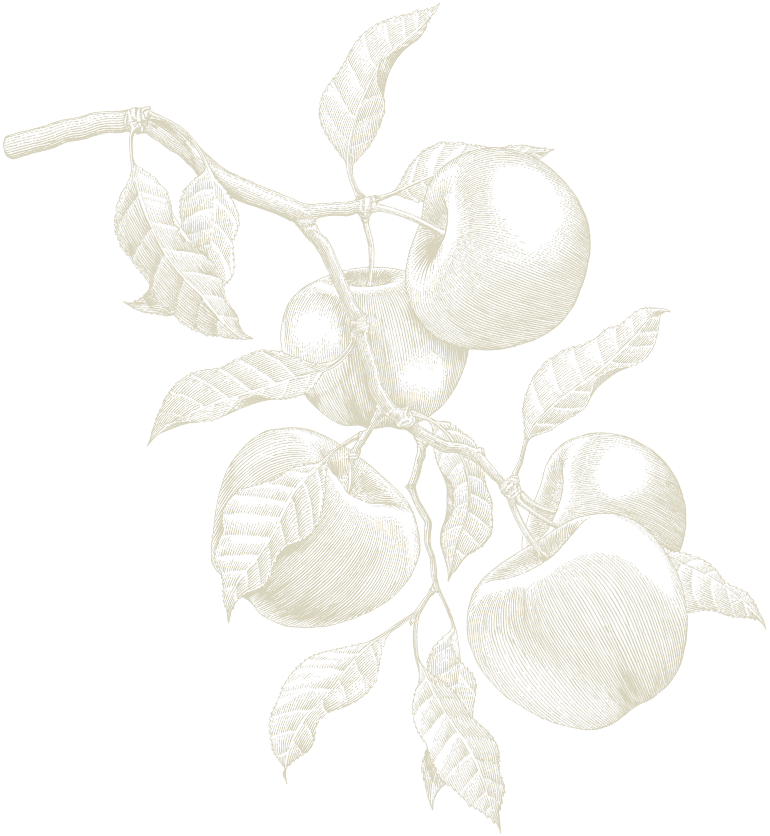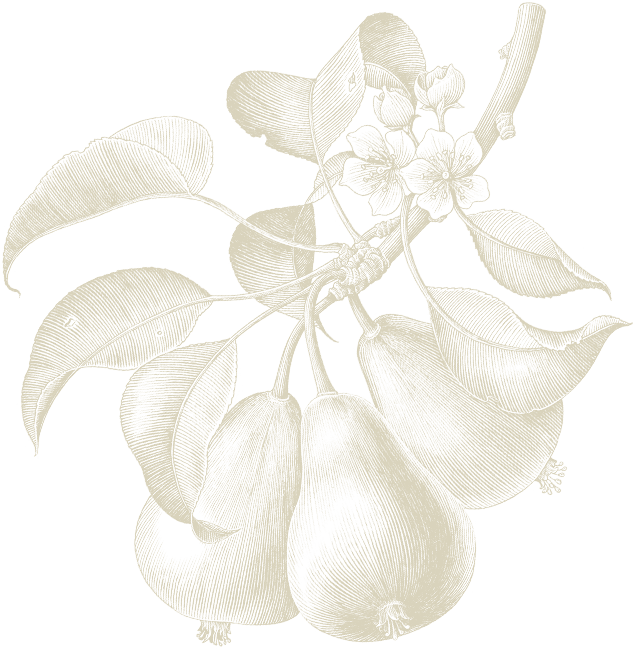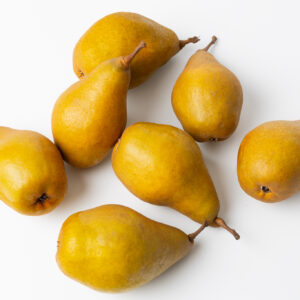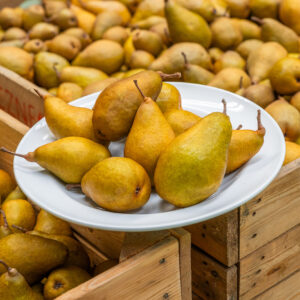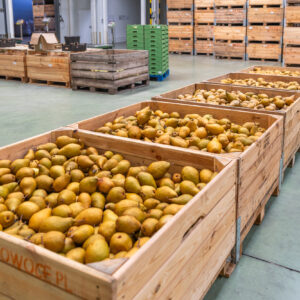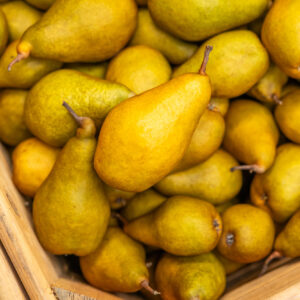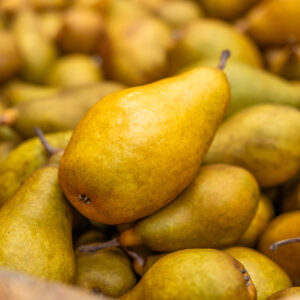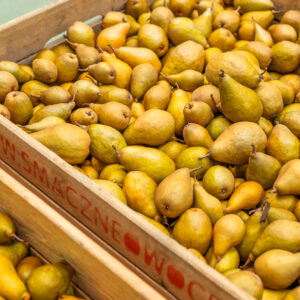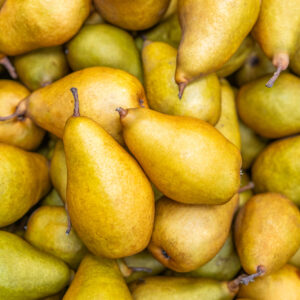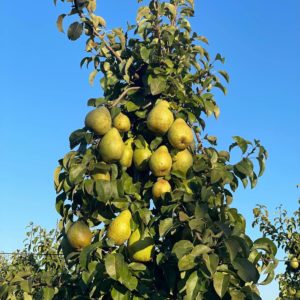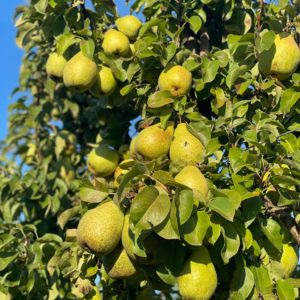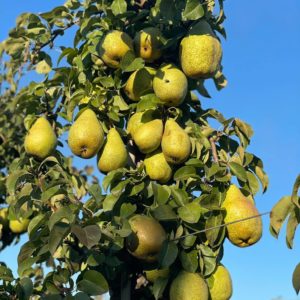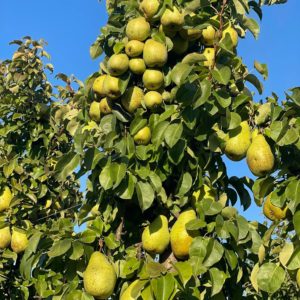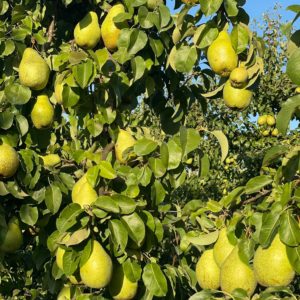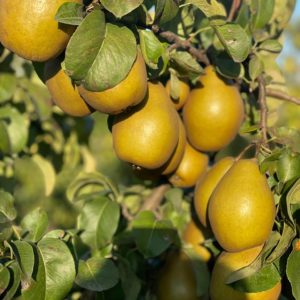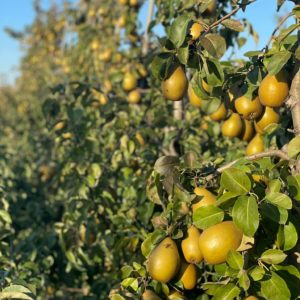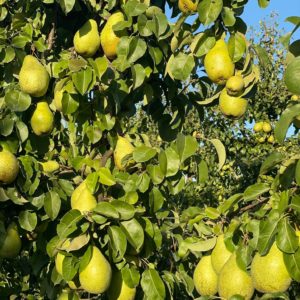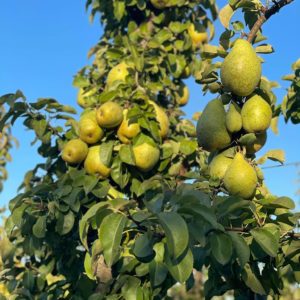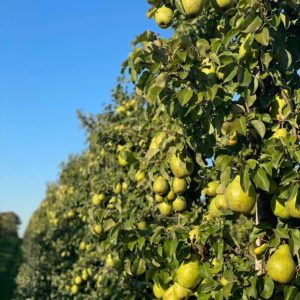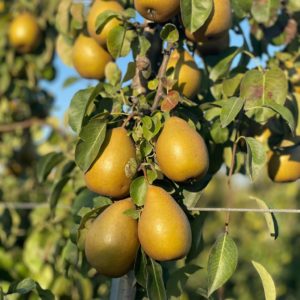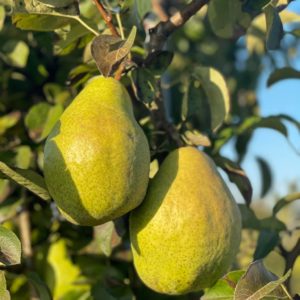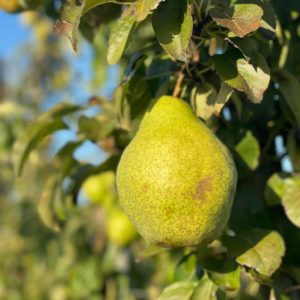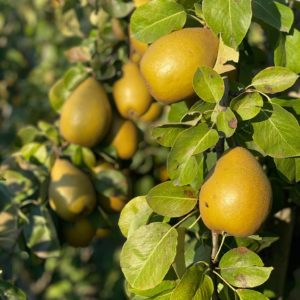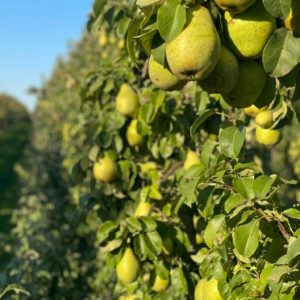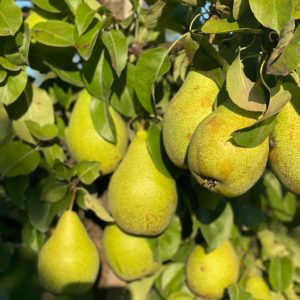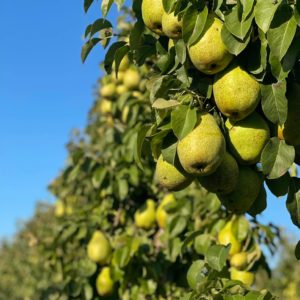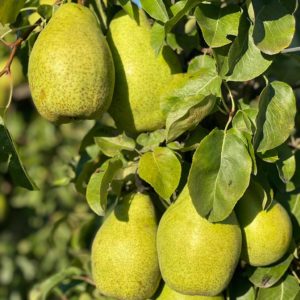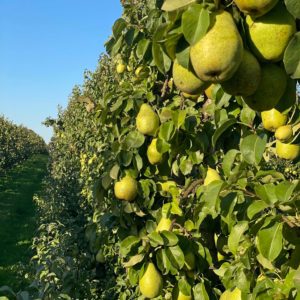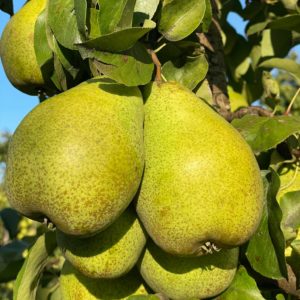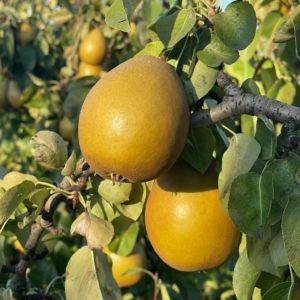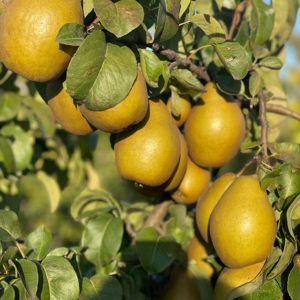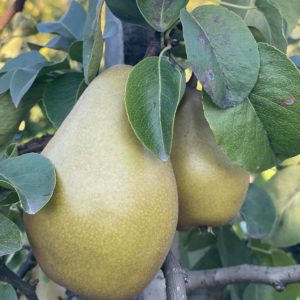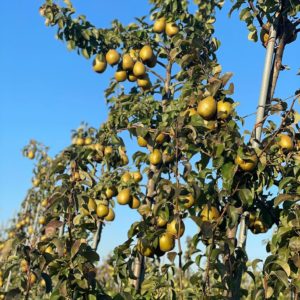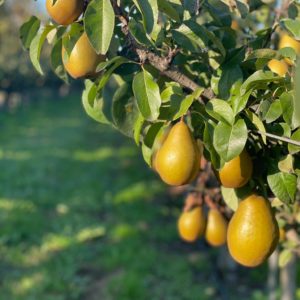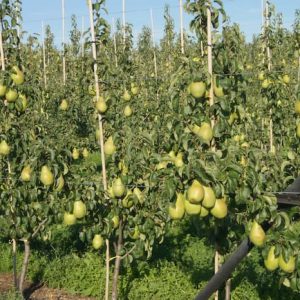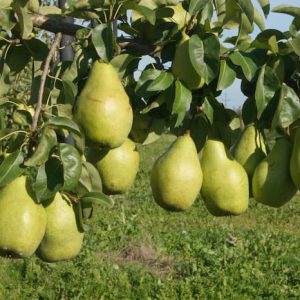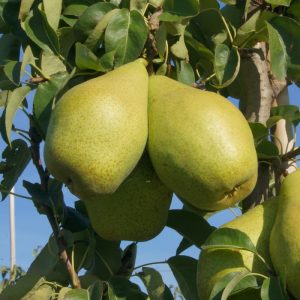History and Modern Cultivation of Pears
Tradition, Innovation and Outstanding Quality
The history of the pear dates back to prehistoric times, as evidenced by numerous archaeological findings, including dried pears from the Stone Age and the Bronze Age. The plant reached ancient Greece and Persia, from where it spread to the Roman Empire. In Roman gardens it became a highly valued species, and its fruit enjoyed growing interest among local gardeners.
the pear has an exceptional ability to form numerous subspecies and intermediate forms through natural cross-pollination. It is estimated that over the centuries several thousand cultivated varieties have been selected. However, many of them do not achieve high productivity and are therefore rarely used in professional commercial orchards.
Pears typically have a characteristic, often elongated shape that tapers towards the stalk. Their flesh always contains so-called stone cells, which give the fruit its specific grainy texture and unique flavour. The skin of pears usually has a green-brown shade and, as the fruit ripens, turns from pale olive to an intense yellow. There are also red-skinned varieties. A distinctive morphological feature of pears is their characteristic russeting – a slightly rough skin texture which is not a defect but an adaptive effect of the fruit to weather conditions in the early stages of its development.
Nutritional and Health Properties of Pears
Pears have many valuable nutritional and health-promoting properties. They are one of the few fruits that contain iodine – an element essential for the proper functioning of the thyroid gland. They are also a rich source of boron, which supports brain function and, when consumed regularly, may reduce the risk of stroke and hypertension. Boron also helps prevent calcium loss from bones, supporting their health and strength.
Pears are also an excellent source of vitamin C and B-group vitamins. In addition, they contain significant amounts of sodium, potassium and zinc, which play an important role in regulating the body’s water-electrolyte balance. Thanks to these properties, pears are not only tasty but also a highly valuable component of a healthy diet.
Pears at the SmaczneOwoce.pl Farm
Pear cultivation on our farm has a tradition of over 50 years, which has allowed us to gain a deep understanding of the requirements of this species and to adapt our production methods to its needs. A breakthrough moment in the development of our plantation came at the beginning of the 2000s, when we were the first in Poland to introduce the Moldovan variety Noiabriskaia, known in Western countries under the names Xenia, Oksana and Novembra.
Thanks to many years of research and experience, we have become the largest producer of this variety in Poland, and pear cultivation currently covers 14.5 hectares. The entire plantation is certified and managed under an integrated horticultural production system, making it one of the most modern in the country.
Our orchard is fully integrated with an advanced irrigation system that includes both under-canopy and over-canopy irrigation. This allows us to precisely control the plants’ demand for water and minerals. Our practices are fully in line with the EU Green Deal concept, which promotes responsible water resource management and sustainable agricultural production.
By investing in innovative technologies and relying on decades of experience, we provide pears of the highest quality, meeting the expectations of both domestic and international markets.
.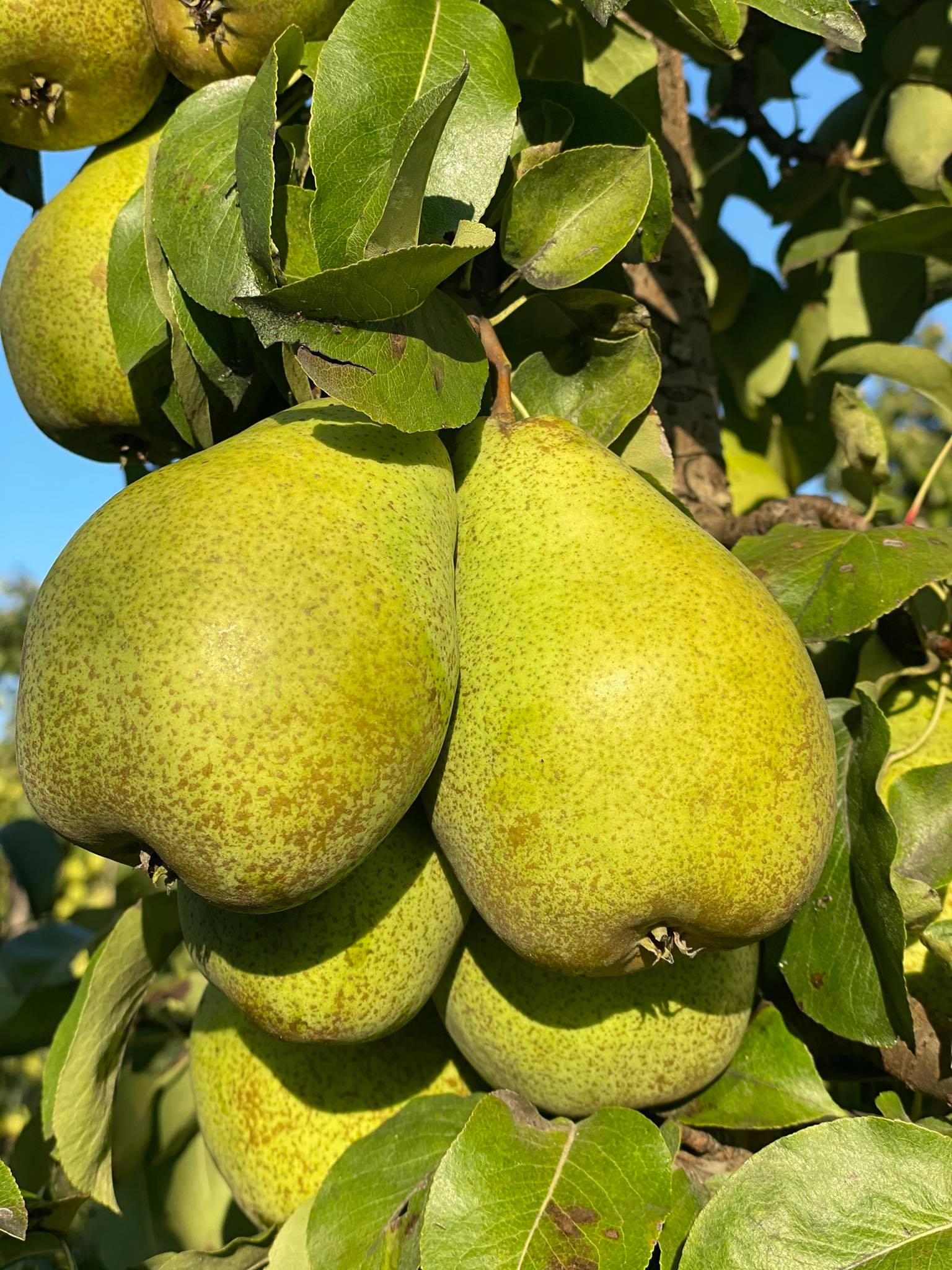
Nojabrskaja
Nojabrskaja
In Western Europe it is also marketed under the names XENIA, OKSANA, NOVEMBRA.
Variety: ‘Noiabriskaya’
(in Western Europe also known as XENIA, OKSANA, NOVEMBRA)
Origin: Moldova
A relatively new variety on the European market. We are the first and largest producer of this variety in Poland and, at the same time, have the longest experience in its cultivation, which clearly sets us apart from other growers. Our plantation covers 14 hectares, which enables a uniform-quality harvest and ensures long-term trade cooperation and deliveries of homogeneous product batches.
Morphological description:
The tree grows moderately vigorously, forming a richly foliated, conical-pyramidal crown. It enters the flowering period relatively early – usually in the second week of April – and, depending on weather conditions, may bloom until the beginning of May.
The fruits are large and symmetrical and only rarely reach exceptionally large sizes compared to other pear varieties. The flesh has an intense green colour, is fine-grained, juicy and exceptionally aromatic. A characteristic feature of the variety is its pronounced, sweet taste, highly appreciated by consumers both in Poland and abroad.
The fruits reach picking maturity in the second half of September, and the harvest period can extend until mid-October. An additional advantage of this variety is its long storage life, which significantly prolongs the fruit’s availability on the market, making it unrivalled among the varieties currently on offer.
.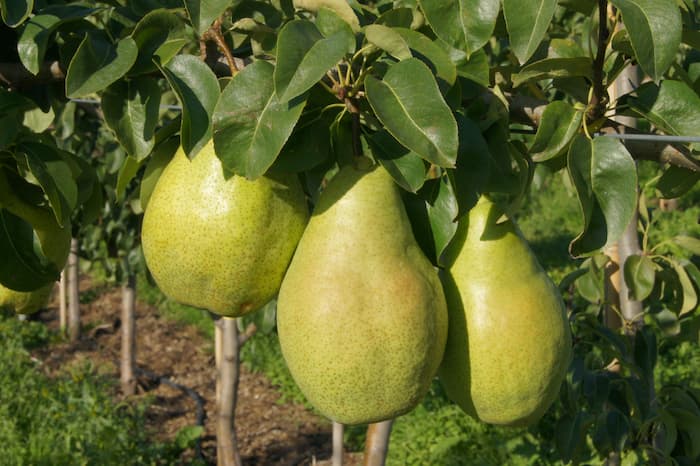
BERGENIA
Proprietary pear variety of Grzegorz Pagacz
Variety: ‘BERGENIA’
Origin: Mutant of the variety ‘Nojabrskaja vel Xenia’, discovered in the orchard of G. Pagacz
Place of breeding: Biała Rządowa, Poland
Registration status: Original
Characteristics of the variety
The fruits of the ‘Bergenia’ variety are distinguished by outstanding qualities, both in terms of consumption and market value. This variety is characterised by a very long flesh breakdown period, which significantly extends its storage and marketing life. In addition, it has a high sugar-acid index and an extremely intense flavour and aroma, making it one of the most highly valued pear varieties on the market.
Many years of careful observation of this variety on our farm have enabled its successful introduction to the market both in Poland and abroad. ‘Bergenia’ is one of the most competitive dessert varieties compared with other pears currently available. From the consumer’s perspective, it is perfect for eating fresh as well as for all types of culinary processing – as an ingredient in desserts, preserves and pickles. Its intense taste and aroma have been appreciated by both consumers and traders on domestic and international markets.
READ MORE
Morphological description::
-
The tree has a medium-vigorous growth habit, forming a richly foliated, pyramidal crown.
-
The fruit is large, elongated, symmetrical and slightly convex.
-
The skin is fairly thick and crisp; the basic colour of the fruit is not visible because the entire surface is covered with a golden-brown russeting. In some years, a delicate reddish blush may appear on the sun-exposed side. The lenticels are medium-sized, brownish, numerous and distributed over the entire surface of the fruit.
-
The stalk is of medium length and thickness or thin, straight or slightly curved, and is set obliquely in a shallow, narrow cavity.
-
The calyx is medium-sized or large, usually half-open, with short, narrow, upright sepals. The calyx cavity is shallow and narrow or of medium width, ribbed, with brown-golden russeting.
-
The flesh is light cream in colour, fine-grained, crisp, juicy and sweet, with a subtle acidic note. There are few stone cells in the area around the seed cavity.
-
Picking maturity falls in the second half of September, and in some years at the beginning of October. The fruits do not drop before harvest and can remain on the tree for a long time until they reach full eating ripeness.




